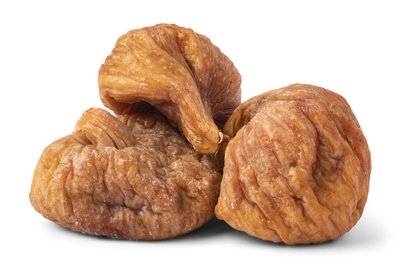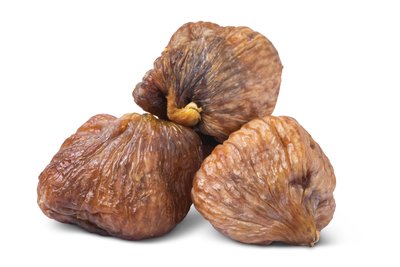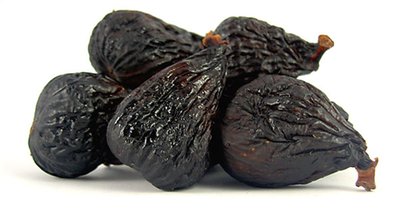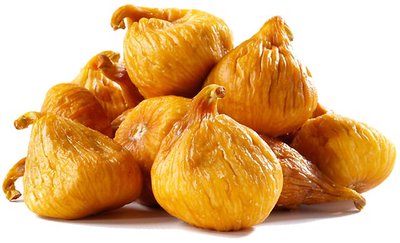Gluten-Free Figs
Sort by:
Our commitment to gluten-free products
While we’ve always sold naturally gluten-free products, we’ve gone a step farther to offer an even wider range of trusted, affordable, and certified gluten-free products.
- We analyzed ingredients, vetted suppliers, and got facility certificates ensuring non-contamination of ingredients and production aids.
- We completely segregated our production lines to eliminate any possibility of cross-contamination.
- We established policies and procedures to ensure compliance and randomly test products in our gluten-free production room.
- Not only do we voluntarily comply with USDA federal guidelines, but we’re also certified by the Gluten-Free Certification Organization.
- We show the GF logo on each product page that is gluten-free.
What are Figs?
A fig is a soft and sweet bulbous fruit that comes from various species of Ficus trees. Figs are native to western Asia and the Mediterranean, but thrive in dry, moderate climates, which make places like California ideal for growing figs. Figs contain hundreds of tiny edible seeds that are appreciated for the texture and nutrients they add to the fruit. They are consumed all over the world in both fresh and dried form, and can be enjoyed as a healthy snack or added to savory and sweet recipes.
Varieties of Figs
1) Black Mission figs are small figs with pink flesh and a deep purple skin that appears black when dried. They have a rich, sweet flavor and a gummy texture. Mission figs are named after the Franciscan missionaries who planted them throughout California in the 18th century.
2) Brown Turkish figs are one of the most popular type of figs. They are a large, moist and succulent variety with a maple-brown skin and light-amber flesh. They have a sweet and mellow flavor that contributes to their popularity around the world.
3) Calimyrna figs have a pale green-yellow color and a warm, sweet flavor. Their name is derived from two places: Smyrna and California. Smyrna is their ancient city of origin in Turkey, and they were introduced to California in the late 1800’s by a San Joaquin Valley grower who renamed the figs to represent their new home.
Figs Nutrition
1) Lower Cholesterol Levels: A study conducted by researchers at Rutgers University found that dried figs are a rich source of phenol and the essential fatty acids Omega-3 and Omega-6, all of which have been demonstrated to lower LDL “bad” cholesterol levels and the risk of coronary heart disease.
2) More Dietary Fiber Than Any Other Fruit: Figs provide 20% of the recommended daily value of fiber, which is more than any other dried or fresh fruit. Figs are particularly rich in soluble fiber like pectin, which has been proven effective at lowering cholesterol. A 2003 study published in The American Journal of Clinical Nutrition found that increased intake of soluble fiber, especially pectin, can reduce the risk of cardiovascular disease.
3) 5-A-Day Goal: Two dried figs counts as one serving of fruit in the 5-A-Day program to encourage people to eat at least five servings of fruit and vegetables every day. The 5-A-Day program in the U.S. is now called Fruits & Veggies - More Matters, but the mission is still the same: to increase daily fruit and vegetable consumption among Americans.
4) Powerful Antioxidants: Figs are rich in antioxidants, which protect our cells from damage caused by free radicals. A 2005 study published in the Journal of the American College of Nutrition found that the antioxidant properties of eating figs canceled out the negative oxidative stress in the bloodstream caused by the high fructose corn syrup in soda.
5) More Health Benefits: Figs are rich in potassium, calcium, and magnesium, which can help regulate blood pressure, support bone development, and control blood sugar levels. Figs are also a good source of prebiotics, which stimulate the helpful bacteria that exist in our gut and supports the function of our digestive system.
Many Uses
Dried figs can be enjoyed as a moist and delicious snack that provides a wealth of health benefits. Their natural sweetness and unique texture also makes them a wonderful addition to both savory and sweet dishes. For an exceptional treat, try pairing dried figs with goat cheese and caramelized onions. They can also be baked into breads, muffins, and biscuits, or chopped up in rice dishes and served with meats. Using a pair of scissors is one of the easiest way to cut up figs. Running your scissors or knife under hot water will prevent it from getting too sticky and make it easier to use. If you plan to use dried figs in dough for baking, coat the figs in flour first so that they will be easier to work with and won’t stick to your pans.
Storage
Opened and unopened bags of dried figs can be stored in the refrigerator for up to six months. Turkish figs should be stored under refrigeration upon receiving, whether or not they are opened yet. Other dried fig varieties can be stored in a dry, cool place for up to 3-6 months. If you plan to store your figs longer, you can transfer them to a freezer bag or airtight container and store them in the freezer for up to a year.












